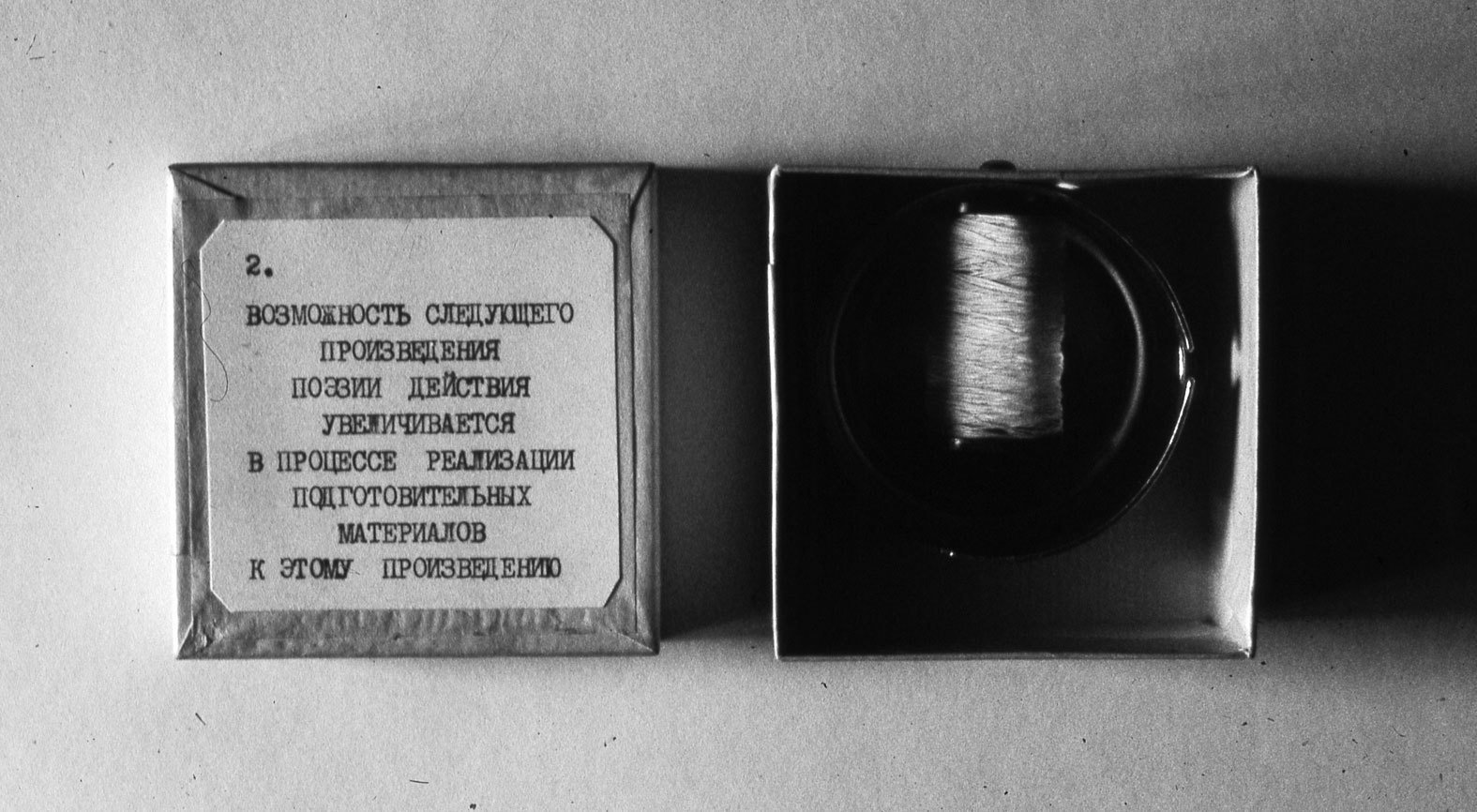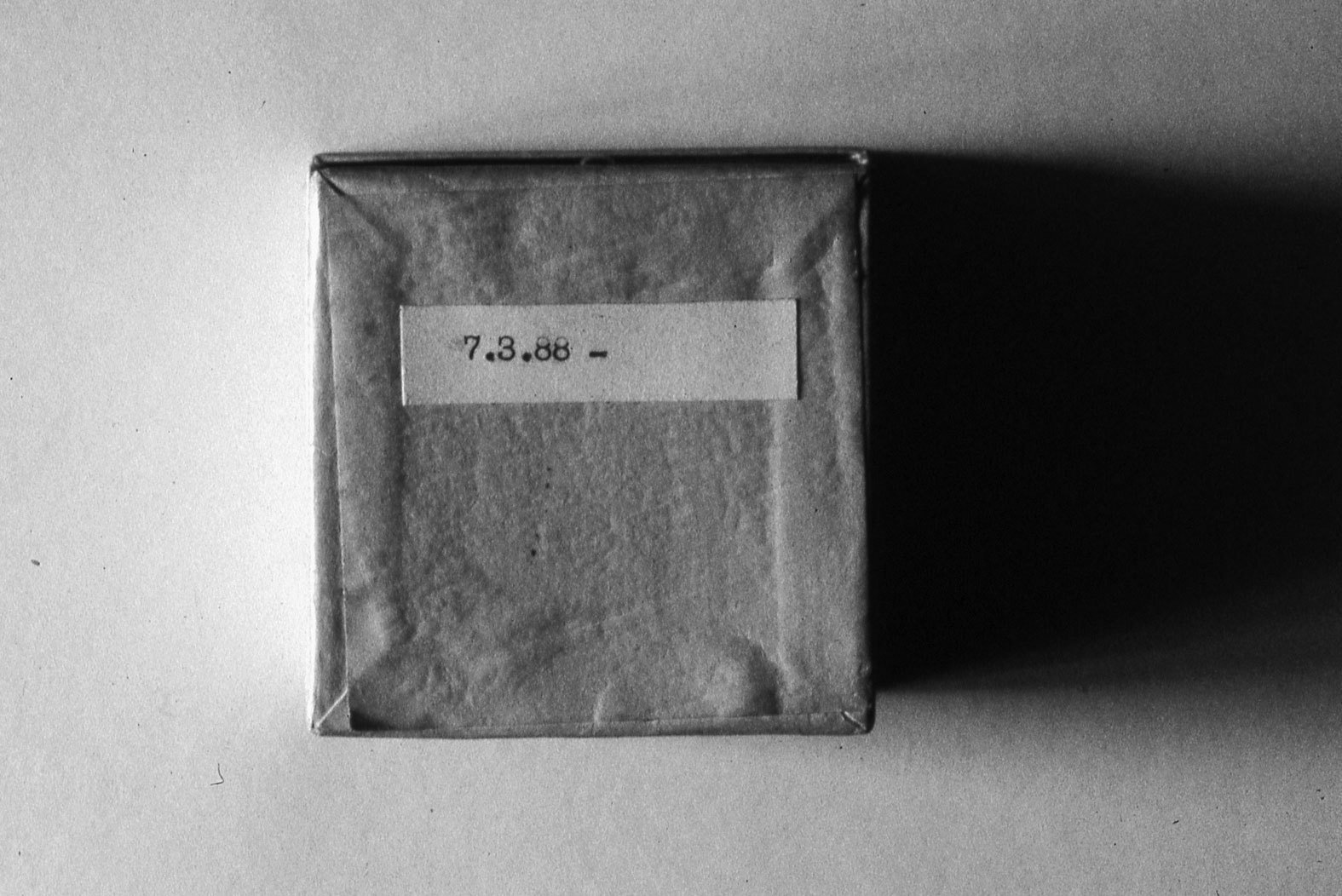do it Moscow: Instructions for the (isolated) viewer
In far off 2014, a number of Russian artists wrote new art-making instructions for the Moscow iteration of do it, an ongoing traveling project that Hans Ulrich Obrist launched in 1993. Essentially, do it was an experiment with the exhibition format (for one thing, it avoided the cost of shipping artworks), and we at Garage think it would work perfectly in the current situation, enabling people to connect to art without leaving the house. In today’s difficult circumstances, we invite you to revisit those witty instructions and devote some time to art.
Yuri Albert (b. 1959)
Untitled (2014)
1
Imagine a work of art that nobody can understand;
2
Now, try to understand it and explain it to others.
Nikita Alekseev (b. 1953)
Ripples In the Water (2014)
Find a lumpy stone weighing around 200gr (finding the stone must be done at a distance no less than 100 km from any ocean or seashore).
Go to the beach using any available means of transport; while on the way, keep shifting the stone from one hand to the other. Fling the stone in the water, and make a photo of the rings breaking up on the water surface.
Write twelve short texts (no longer than a page) relating to the following topics:
“Flinging stones in the water”
“Flinging cushions in the water”
“Flinging sticks in the water”
“Flinging bricks in the water”
“Flinging footballs in the water”
“Flinging books in the water”
“Flinging geese in the water”
“Flinging icons in the water”
“Flinging politicians in the water”
“Flinging oranges in the water”
“Flinging kippers in the water”
“Flinging sand in the water”
Illustrate those texts with the photo made on the beach.
Publish the texts as a book in 120 + 1 copies, and post them to a hundred and twenty unfamiliar addresses found in the address book of the city where you live.
As for the last copy, keep it to yourself and show it to nobody.
Sergei Sitar (b. 1969)
Untitled (2014)
DON’T DO WHAT THIS INSTRUCTION IS SUGGESTING
Andrei Monastyrski (b.1949)
Poetry of actions (1988-2014)


Alexander Petrelli (b. 1968)
Untitled (2014)
An excerpt from Neobyknovennyj Kontsert (An Unusual Concert, 1946), Sergey Obraztsov’s vaudeville-style puppet show.
Select six participants for a re-enactment of the video excerpt.

Master of Ceremonies:
Being a devoted connoisseur of all things new, I can’t ignore a special form of ultra-avant-garde music that is quite popular
in some corners of the West… and the South-West.
My dear friends, we all do sound. To live means, primarily, to sound. Man sounds! Remember the golden words of Gorky:
“Man—it sounds.” At this time, however, you will hear something apart from a man—the sounds of things around him.
Things will sound, life will sound.
Meet Valdemar Kysh, Vice-President of the Zyuzino Society for Promoting New Sounds, and his quintet Wham -71!
Raise the curtain, please.

Valdemar Kysh:
Listen to the three-part quantum musical construction entitled Worldview.
Part 1: “Deep in Thought”

The calm transparent adagio—delicatomento, congusto, non-propo, acabalemento; to some extent, celebroso, misterioso—
is marked by the arising avicenda, or a peculiar dialog between the vigorous wind staccato and a singularly vibrating, rattling string glissando. The door’s intimately screeching legato ends on an unambiguously protesting metal rail note, apparently affirming the prevalence of the young in the eternal conflict between fathers and children.
Would you please.
Thus ends Part 1.

Part 2: “Contemplation”
Well, here listeners are certain to discern the composer’s personal tones, emphasized by a light mormorando of the tea solo instrument. The conclusion of Part 2 is marked by allegro furioso barbaro—a wild howl of a domestic creature.
Would you please.

Part 3: “Finale: Apogee,” which concludes with the author’s explicit ultimo credo, finely and gently conveyed by moncando-pianissimo sussurando of the flush tank instrument.
Would you please.

Oleg Kulik (b.1961)
Life Higher than Art Guide (2014)
1) Perch chickens on poles above your head;
2) Sit down at the desk, take a pen and a pad of paper;
3) Write the story of your life;
4) Having worked for 8 hours, compare your impressions of writing this biography with its content.

Anatoly Osmolovsky (p./ b. 1969)
Instruction for viewers (2014)
Look at the picture of existing slices of bread and choose the pattern you like. The selected patterns should then be sent for manufacturing.
Existing slices of bread:

Examples of patterns:


Konstantin Zvezdochetov (b. 1958)
White Performance (1982)
One half of a room, including the walls, the floor, and the ceiling, is completely covered with cotton wool, to look like a white stage. Two white chairs are positioned on either side of the “stage”; above them, two rows of white ropes run across the room (just above human height). Bandaged from head to toe, a man is seated in one of the chairs, holding a scalpel with his teeth. A white disposable glove, filled with red dye, is hanging from one of the ropes. The man stands up and slowly moves forward, touching the rope, until the scalpel in his mouth reaches the glove. The dye spills around the room from the cut glove, while the man proceeds further and sits down on a second chair.
Atlantis (1982)
We need a toilet.
Also, we need a piece of poo.
And an empty pack of Belomorkanal smokes.
A man enters a restroom and takes a dump. Then he puts the empty Belomorkanal pack face up on top of his poo, examines it, and flushes the toilet.
Еlectobroutique (f. 2004)
ARTOMAT.pro Instruction (2014)
ARTOMAT is an automated system for the production of art. Choose an object, add to it various features, bring it together with another object and put it in the right place, and your unique artwork is ready!
Our programme has an intuitive interface and offers unlimited creative possibilities. To enhance the pleasure of creation a slight bit more, here is a short instruction:
Step 1. Choose one of the 80 carefully selected objects for your further creative work: an airplane, Micky Mouse, the statue of Venus de Milo or anything else.
Step 2. Choose the transformation you would like your object to go through–you can choose to rotate it, blow it up, cover it with paint, combine it with another object etc. You can reshape it more than once! At this stage you can rotate the object around a vertical axis.
Step 3. Choose where to place your work of art: a museum, a town square, a gallery, the desert, african village etc.
Step 4. Choose how to place your work of art: on the floor, on a podium, in an aquarium…
Bingo! Your artwork is finished! You can email it to a friend or start again!
Enjoy creating!
Electroboutique

Valia Fetisov (b. 1989)
Imminent Collapse (2014)
Someone must take a large sum of money, go to the supermarket,
hide the money behind the items on the shelves and spread the news about what he/she has done.

